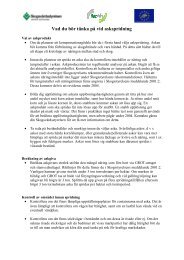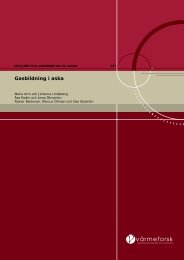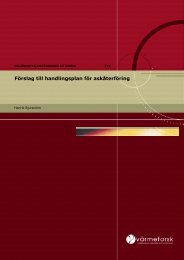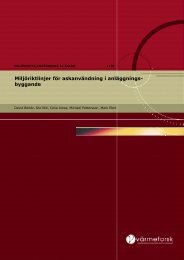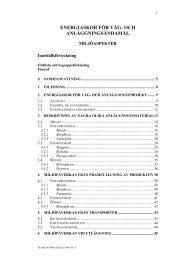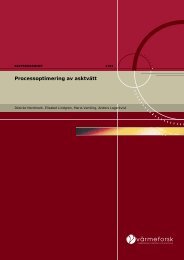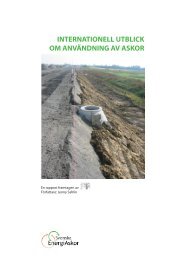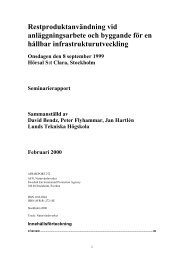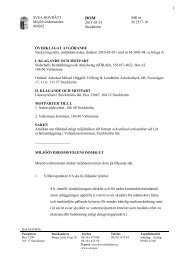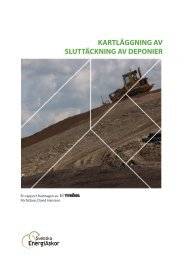Rapport 957 Vatgas.pdf - Svenska EnergiAskor AB
Rapport 957 Vatgas.pdf - Svenska EnergiAskor AB
Rapport 957 Vatgas.pdf - Svenska EnergiAskor AB
- No tags were found...
Create successful ePaper yourself
Turn your PDF publications into a flip-book with our unique Google optimized e-Paper software.
VÄRMEFORSKSummaryIn recent years, explosions have occurred in certain phases of ash handling in Sweden.Investigations have revealed that hydrogen may have been present in all cases. The hydrogenis believed to be generated by chemical reactions of aluminium and other metalswithin the ash in the presence of water.The purpose with this study is to increase the knowledge of gas generation of incineratorash. Thereby, guides for appropriate ash management can be introduced and therisk for further explosions prevented.The study has comprised analyses of the ash properties, such as chemical and physicalcomposition and the pH, of ash from 14 incineration plants (mostly waste incinerationplants). Different fractions of ash materials representing different parts of the processin each plant have been analysed. Furthermore, the fuel and the technical differencesbetween the plants have been analysed. A tool for measuring the gas generation in thelaboratory has been developed and the gas generation of the different ash materials atnatural and increased pH was measured. Gas analyses and thermodynamic calculationshave also been performed.The results showed that:− bottom ash from fluidised bed boilers generated small amounts of gas at increasedpH, much smaller amounts than the idle pass, cyclone and filter ash did,− bottom ash from grate fired boilers generated more gas at increased pH than theircyclone ash and filter ash, with exception of the Linköping plant,− all bio waste incineration plants generated ash with low gas generation potential,− all fly ash materials with a gas generation potential of more than 10 l/kg originatedfrom municipal waste incineration plants,− filter ash that had been stored in oxygen rich environment generated significant lessgas than fresh filter ash of the same origin,− hardly any other gases were generated apart from hydrogen (very small amounts ofacetone, furane, benzene and most likely methane were detected in some of the ashmaterials),− there were no other reactive metals in addition to aluminium (iron, copper and ledwere tested),− the combination of high total aluminium content of an ash material and low volumeof gas generation is possible, since the total aluminium content comprises both theelemental and the non-elemental aluminium and it is only the elemental aluminiumthat generates gas,− aluminium particles can survive incineration without melting and without substantialoxidation of the particle surface,− solid aluminium oxide (Al 2 O 3 ) is the stable form of aluminium in a boiler.Based on the results in this project the following recommendations for handling the ashcan be given to decrease the gas generation and to prevent the risk for explosion: Thecontent of elemental aluminium or the potential of gas generation should be analysedregularly for ash materials from municipal waste incineration plants; Metal separation –including non-magnetic metals – of the fuel for waste incineration plants is necessary;Good ventilation of the ash after wetting, together with storage in oxygen rich environmentis desirable.Key words: ash, hydrogen, aluminium, explosion, incinerationvii



